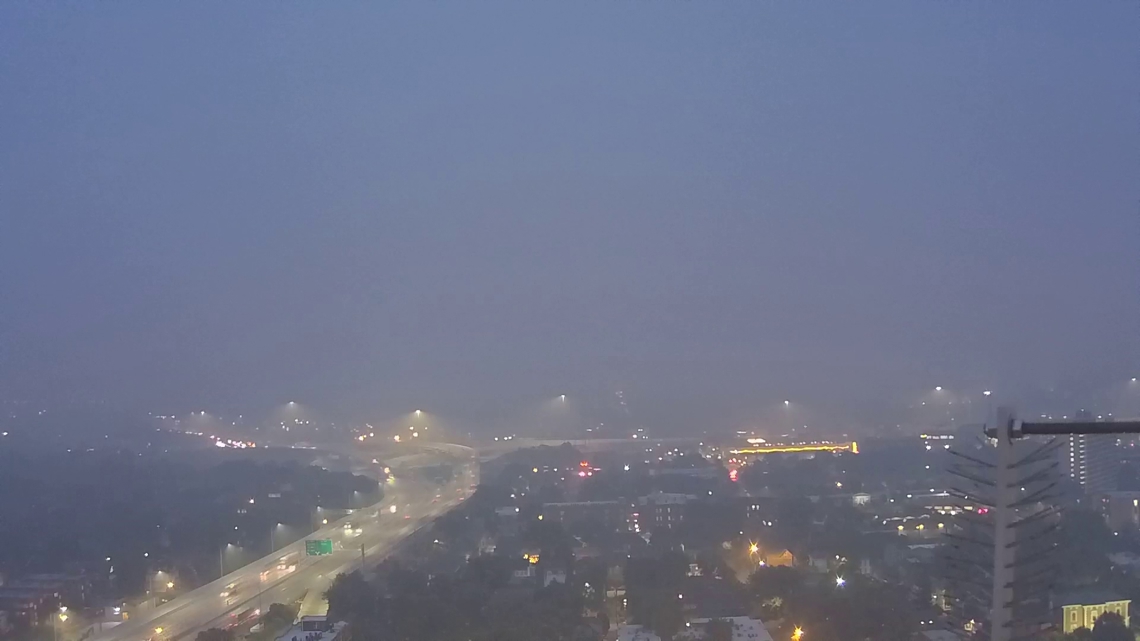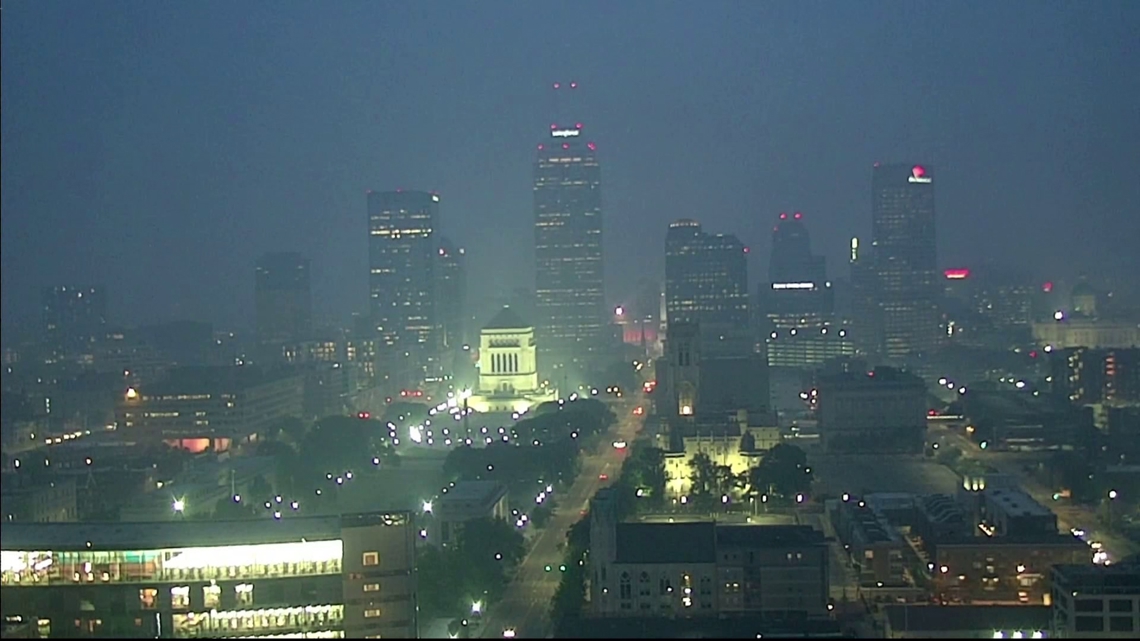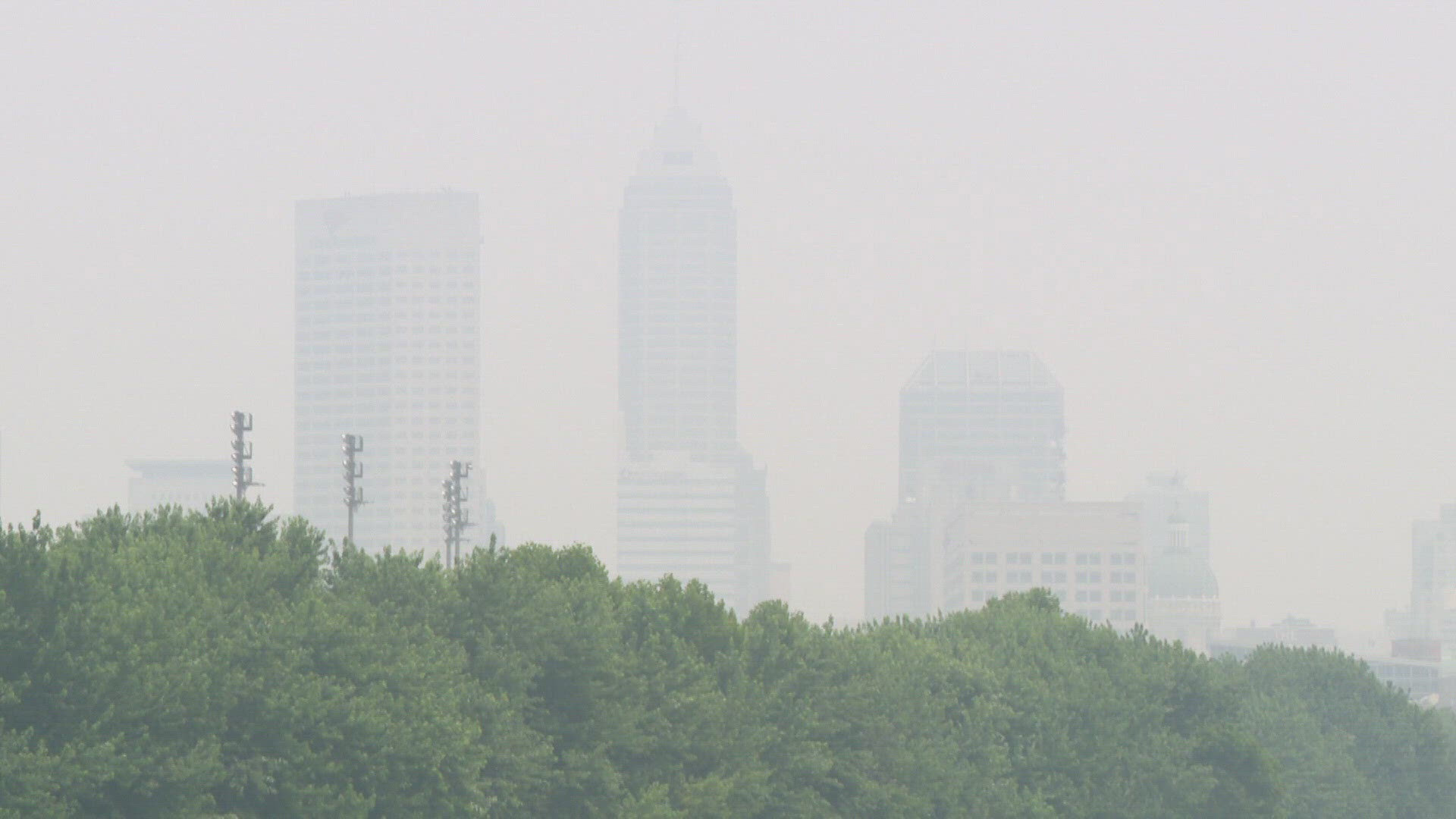INDIANAPOLIS — Like air, most pollution is invisible. But the effects it has on people can be dramatic. For people with sensitive lungs, it can cause asthma attacks. For others, it may just feel like allergies. But for some, the pollution they breathe in will end up giving them life-threatening problems like stroke or lung cancer.
A new report from the American Lung Association shows that Indianapolis has some of the lowest air quality in the country. Indianapolis is ranked the 11th most polluted city in America. The cause is the same thing that gives Indianapolis its nickname – we’re the crossroads of America.
“Everyone inside 465 and the other highways – they are bringing in all of that highway exhaust,” said Tiffany Nichols, advocacy director for the Indiana Chapter of the American Lung Association. “Many, many, many vehicles like diesel trucks pass through every day, leaving behind that very unhealthy exhaust. And we aren't necessarily ready to deal with it in Indiana from a legislative standpoint.”


Those vehicles bring particle pollution, where Indiana gets an “F” from the American Lung Association.
Despite what you may think, particle pollution is invisible. At least until it’s at the levels we saw during the Canadian wildfires in 2023, when city parks were closing to encourage people to stay indoors. That’s something Nichols says you should do on high-pollution days, even when it isn’t that dramatic.
“If it’s a day that there’s high-particle pollution or ozone, sadly, try to limit your time outdoors as much as possible,” Nichols said.
Indy does somewhat better on ozone pollution. The county gets a “C” on that topic. Ozone is what you probably think of when you think of air pollution. It creates the clouds of smog you can see over cities like Los Angeles, and which you used to see here in Indianapolis. But its effects are still unpleasant.


“It essentially can be like a sunburn on your lungs,” Nichols said.
And the burden isn’t shared equally. Research finds that communities of color are 39% more likely to be in areas with heavy-particle pollution.
In part thanks to the Canadian wildfires, air pollution is getting more attention in Indiana.
“That got a lot of people realizing, 'oh, when the air is bad, I feel sick. I have headaches. I'm irritable,’” said Gabrielle Filippelli, executive director of the IU Environmental Resiliency Institute.
But Marion County had bad air long before the wildfire smoke. It got an “F” rating for particle pollution in 2022 as well. The smoke only made the problem worse.


“We can't look to Canada for our bad grades,” Filippelli said. “They're actually homegrown.”
But the situation is not hopeless, and we are not powerless. Driving is the biggest cause of most of our particle pollution and is also helping to speed up climate change – which fuels wildfires. Filippelli says cutting back will help with both, and that we have recent proof.
“When we had that COVID lockdown, what happened is people weren't driving very much, right?” Filippelli said. “And our air quality improved by 40%."
So while lawmakers can consider options used in other states, which have seen falling pollution, there are things Hoosiers can do right now.
“Maybe consider a hybrid, or even electric,” Filippelli said. “Bike around more. Walk around more. Take public transit. These are all things I try to embrace myself, knowing that I'm only one tiny little cog in this big engine. But if enough tiny cogs do it, it'll actually improve the city.”

